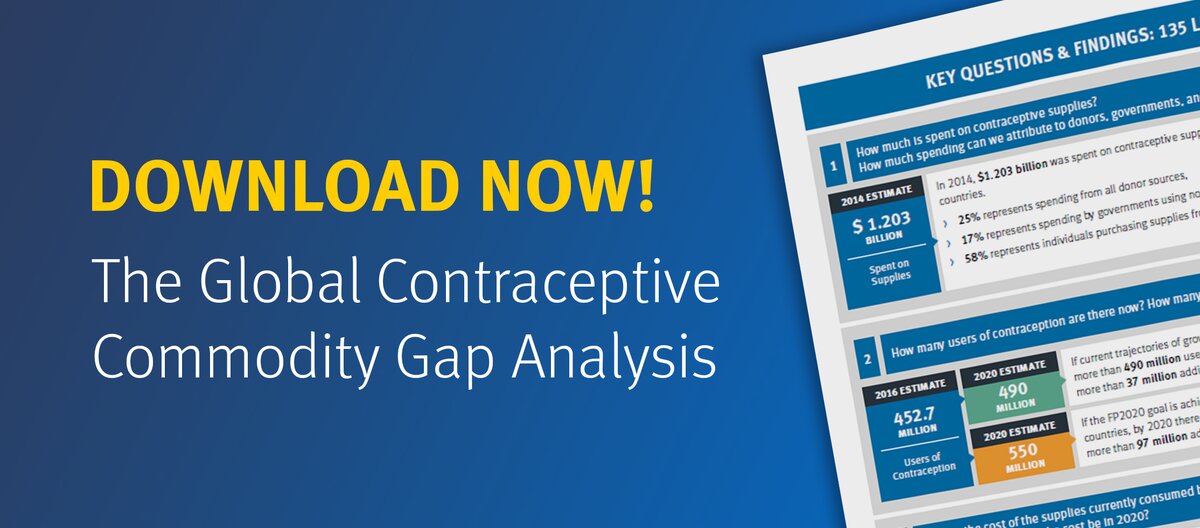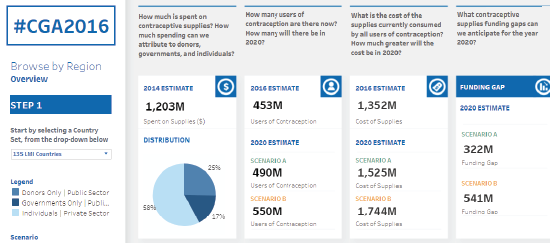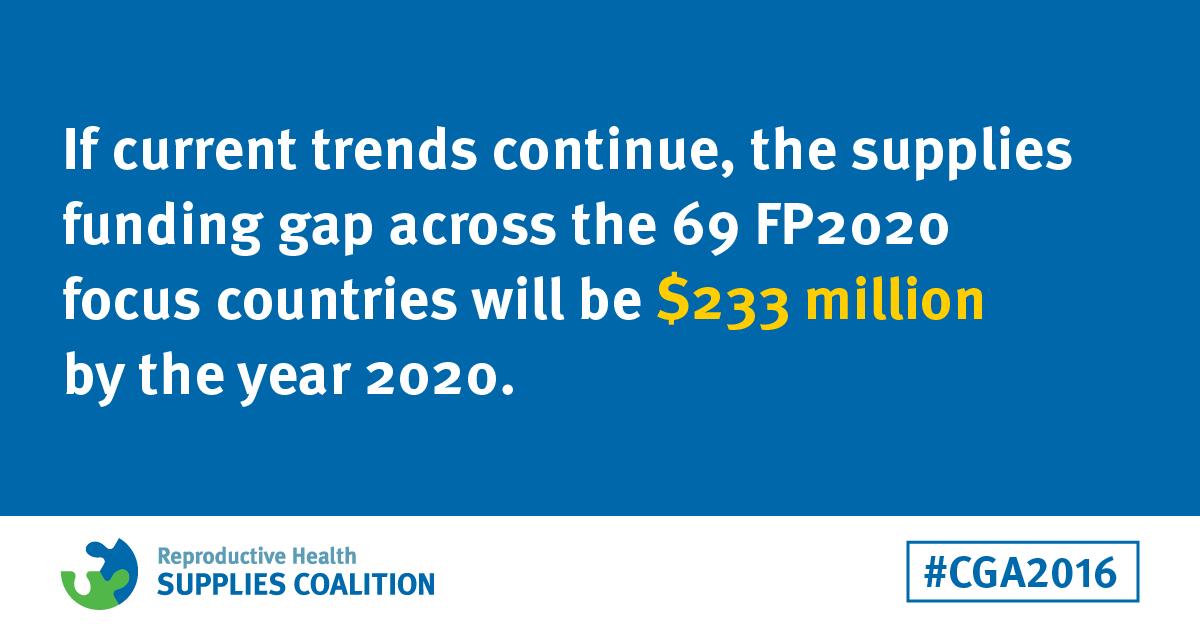Commodity Gap Analysis 2016

Download the analysis
The full report is now available and ready for download.

Commodity Gap Dashboard
Get all the numbers, by using the interactive dashboard.
Key Findings

Share this message on

Find out more
- In 2016, there were 452.7 million users of contraception living in the 135 LMI countries. 300 million lived in the 69 lowest-income countries (the “FP2020 focus countries”).
- If current trends continue, in 2020 there will be 490 million users of contraception in the 135 LMI countries. Most of the growth will occur in the 69 focus countries, where the number of contraceptive users will increase to 334 million.

Find out more
- In the 135 LMI countries, the total amount spent on contraceptive supplies at the most recent measureable level was $1.203 billion. By the year 2020, the cost of the supplies required by the projected number of users of contraception will exceed this amount by $322 million.
- The need for additional funding will be greatest in the subset of 69 focus countries, which accounts for $821.8 million of total spending on contraceptive supplies. By the year 2020, the supplies consumed by the projected number of users of contraceptives in the 69 focus countries will exceed this amount by $233 million.

Find out more
- The public sector – donors and governments combined – contributed 42% of the total amount spent on supplies in the 135 LMI countries; the rest of the spending came from individuals who purchased their own supplies from the private sector. In the subset of 69 focus countries, the public sector contributed a slightly higher percentage – 46% - but the majority of spending still came from individuals.
- For the public sector to continue funding a 42% share of the supplies cost in the 135 LMI countries, by 2020 it must increase the absolute amount it spends by $136 million. In the 69 focus countries, the absolute amount of the increase required to maintain a 46% share is $106 million.
- If public sector funding for supplies in the 135 LMI countries remains at the current level – $508 million – every additional user will have to pay out-of-pocket to obtain supplies from the public sector.
- The amount currently spent by the public sector in the 135 LMI countries would cover just 33% of the cost of the supplies users will require in 2020. Individuals would be expected to absorb the remaining 67% of the cost, or $1.017 billion. In the 69 focus countries, public sector funding at the current level would cover just 36% of the cost of the supplies will require in 2020; individuals would be expected to fund 64% of the total cost, or $680 million
- If the FP2020 goal were achieved, there would be 90 million more users of contraception living in the 69 focus countries in 2020 than there were in 2016. If public sector funding does not increase beyond its current level ($375 million), every additional user will have to pay out-of-pocket to obtain supplies from the public sector.